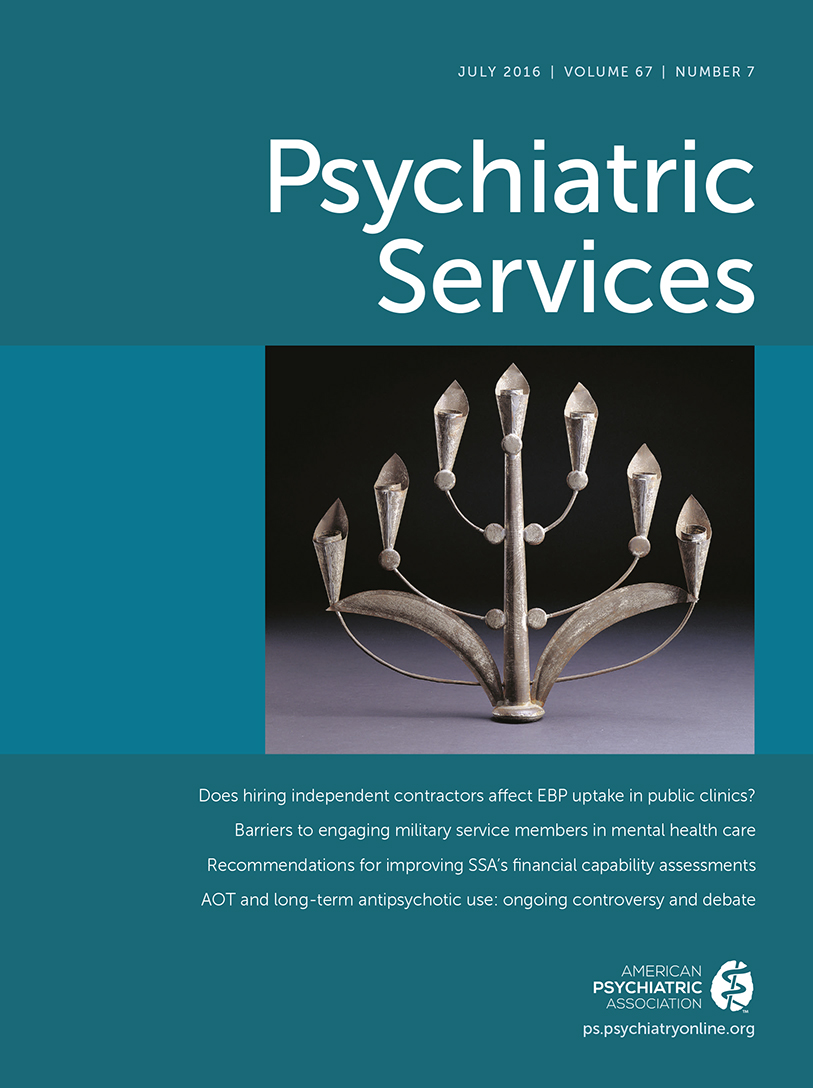Contract Employees and EBPs in the Post-ACA Era
The study by Beidas and colleagues in this issue makes an important contribution to our understanding of the many factors involved with the implementation of evidence-based practices (EBPs) in publicly funded community mental health systems. Beidas and colleagues, who administered structured interviews to 130 therapists in 23 organizations throughout Philadelphia, found that publicly funded mental health clinics are increasingly employing independently contracted therapists to meet the demands for services. Their results suggest that psychotherapy staff who are hired on a contractual basis may not have the same level of engagement as salaried staff in the provision of structured evidence-based psychotherapy. In addition, they suggest that clinic administrators are often less willing to invest in training for contracted therapists in part because of the perception that these staff are more transient than salaried staff.
This area of research and the findings of this study are important for many reasons as we enter an unprecedented era in the evolution of U.S. behavioral health care policy, the post–Affordable Care Act (ACA) era. The ACA includes multiple provisions that increase the demand for behavioral health treatment. Through either Medicaid expansion or purchased insurance, over 20 million Americans are newly insured. Insurance benefits must now include parity and cannot exclude individuals with preexisting conditions, and transition-age youths can remain on their parents’ plans until age 26. Younger persons are generally less affected than older generations by stigma about seeking behavioral health treatment, and they are one of the demographic groups that have made the greatest gains in terms of becoming newly insured in the post-ACA era. Each of these elements and all of them together increase the demand for behavioral health services.
As the number of persons with access to behavioral health treatment increases, another important aspect of health care in the post-ACA era comes into play: the concept of value. For years, Americans have experienced rising health care costs with considerable variation in the quality and outcomes of care for individuals and for groups of individuals or populations. Increasingly—and particularly from payers on behalf of beneficiaries—there is a demand for clearer value. Consumers themselves are becoming more sophisticated about value when purchasing treatment and services, and this is especially true for those who opt for high-deductible insurance plans, which are increasingly chosen by individuals who are directly responsible for paying the premiums. Broadly, value in health care and in behavioral health care refers to the quality of the service or intervention weighed against the cost to deliver that service or intervention. The focus on quality in behavioral health services is rapidly evolving, and implementation of practices with demonstrated effectiveness that produce good individual and population outcomes is increasingly required by health systems, payers, and consumers.
These forces result in new and intensified pressures on public mental health clinics: an increase in demand for services and, at the same time, an increased mandate to demonstrate quality through the delivery of evidence-based treatments with measured outcomes. These forces will not allow public mental health clinics to continue to offer generic, historically undifferentiated treatments—in effect saying, “We do not need to change our approach to practice. Demand is high, and we can continue on as we have always practiced.” Rather, the demands for quality from payers and consumers will force public mental health clinics to provide high-value, efficiently managed services that have a demonstrable impact on individuals and on groups or populations.
These pressures will result in clinic leadership that is increasingly sophisticated in the management of revenue and expenses. Given that staffing is the major expense in the business of a mental health clinic, efficient management of professional staff is critical. Clinics will look at staffing mixes with an eye toward salaried professionals versus contracted and on-demand staffing. Many of the current arrangements that involve contracted staff are similar in style to general business trends in on-demand scheduling, which has been criticized because it leads to unpredictable income and schedules for contracted staff, as described in a recent report from the Center for Popular Democracy. Clinics need to understand the trade-offs that come with salaried versus contracted employees. Just as there are pros and cons to renting versus owning a home, there are advantages and disadvantages to contracted versus salaried professional staff. Thank you to Beidas and colleagues for providing data that elucidate some of these differences.



